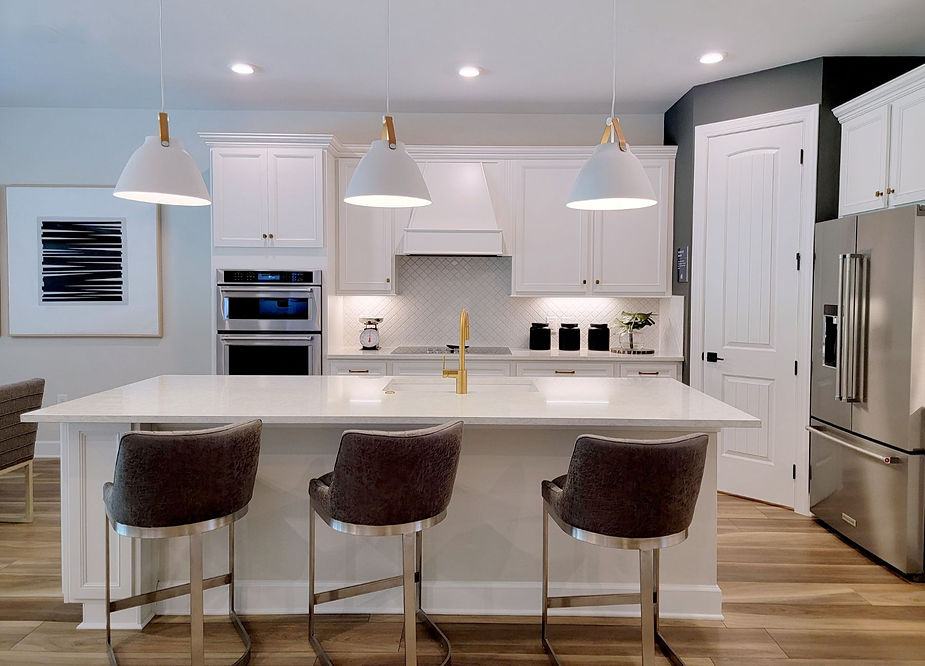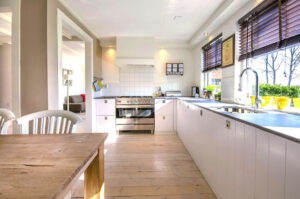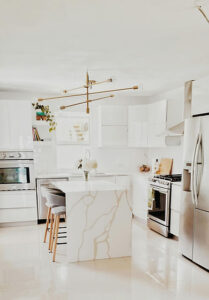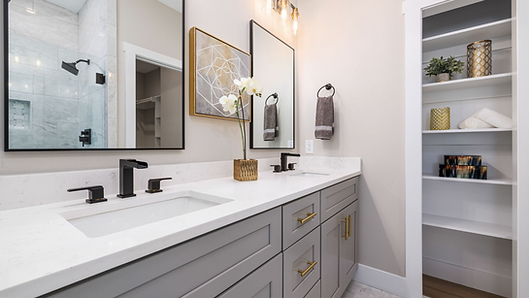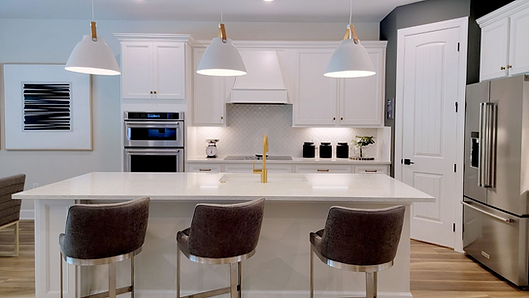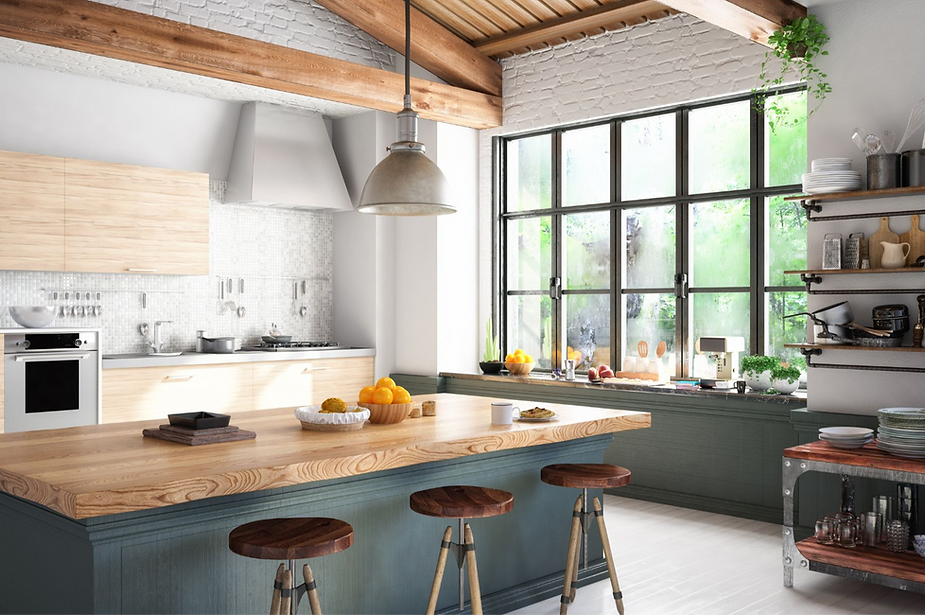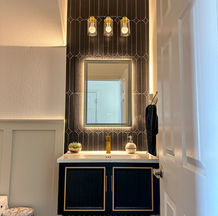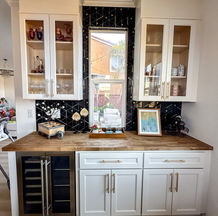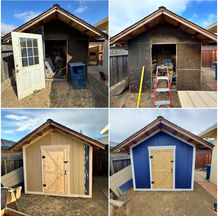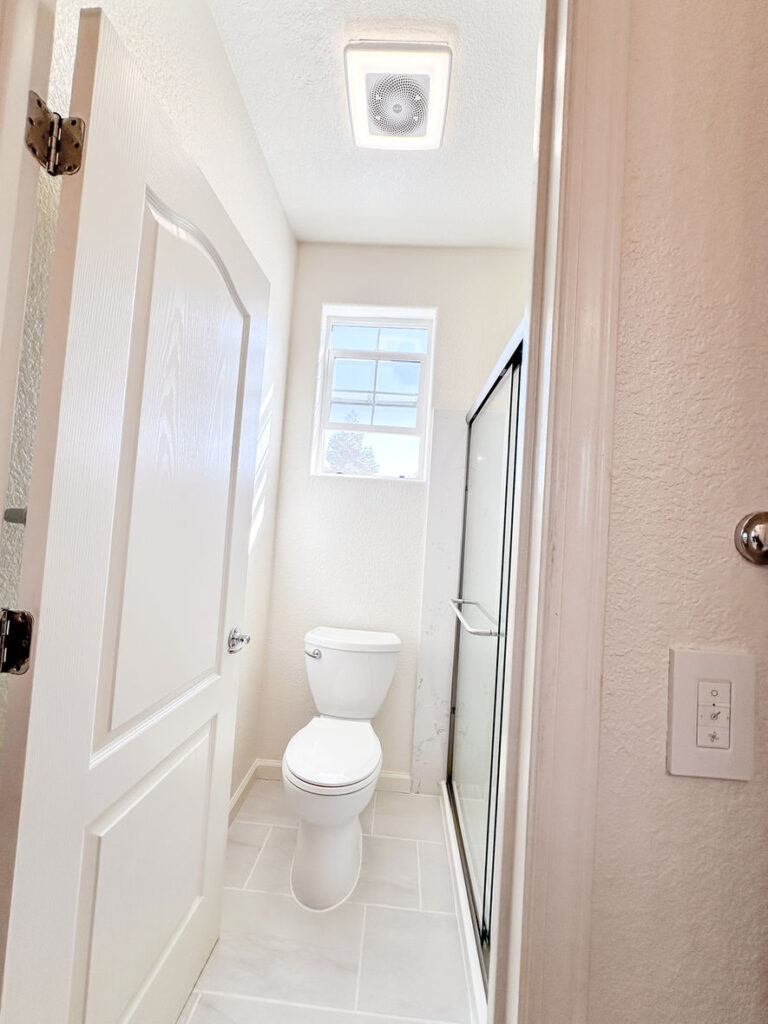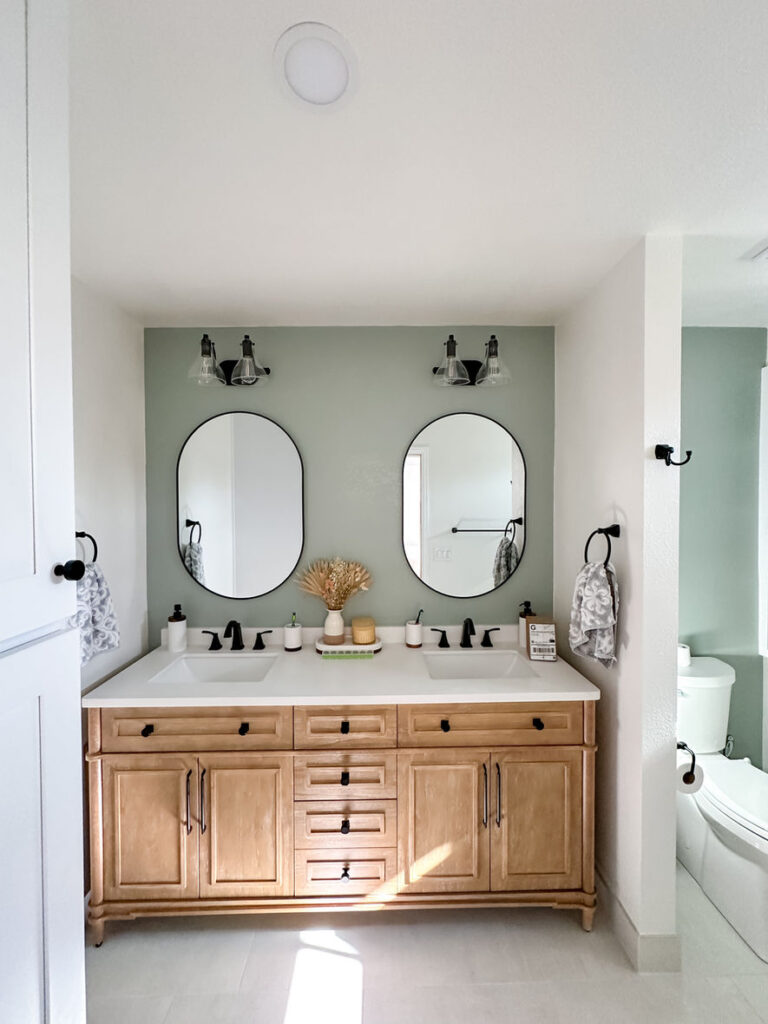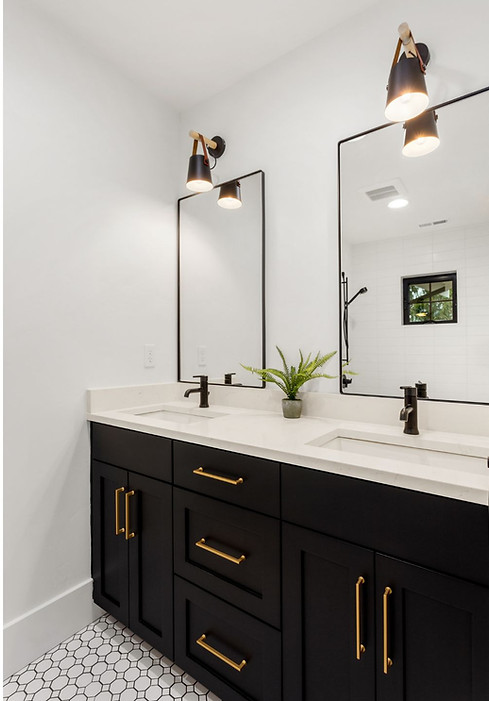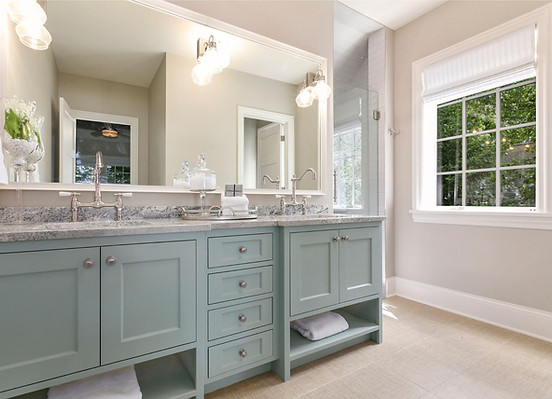The kitchen is the heart of your home, and the right lighting can completely transform the space. Whether you’re cooking, entertaining, or enjoying a meal, proper lighting helps create the right ambiance and enhances the functionality of the kitchen. In this blog post, we’ll walk you through the essential lighting types, tips, and tricks to choose the best lighting for your kitchen remodel. Let’s make sure your kitchen is as well-lit as it is beautiful!
1. Understanding the Three Types of Lighting
Before diving into specific fixtures or styles, it’s important to understand the three basic types of lighting that should be incorporated into your kitchen design:
- Ambient Lighting: This is your kitchen’s primary light source, providing general illumination for the whole space. It’s the “base layer” of lighting that sets the tone for the room.
- Task Lighting: As the name suggests, task lighting is used for specific tasks like cooking, chopping, or cleaning. This lighting is concentrated and aimed at work areas to provide focused light.
- Accent Lighting: Accent lighting is used to highlight specific areas or features in the kitchen, such as a beautiful backsplash, kitchen island, or open shelving. It creates visual interest and adds a touch of elegance to your design.
For a well-rounded kitchen, you should aim for a combination of all three types of lighting.
2. Consider the Layout of Your Kitchen
The layout of your kitchen plays a significant role in choosing the right lighting. Consider the following areas and the type of lighting that will best suit them:
- Work Areas: Your countertops, island, and sink need focused task lighting. Recessed lighting or pendant lights over the island can provide the brightness needed for these areas. Under-cabinet lighting is also an excellent option to illuminate work surfaces.
- Cooking Zone: If you have a stove or oven, you’ll want bright, direct light. Overhead pendant lights or recessed lights strategically placed above your cooking area can ensure there’s no shadow when you’re prepping meals.
- Dining Area: If your kitchen includes a dining area, a pendant light or chandelier above the table can provide soft, ambient lighting. Make sure the fixture is at the right height so it doesn’t obstruct views or interfere with the meal.
- Accent Areas: If you have unique features such as an open shelf, a beautiful backsplash, or a high-end appliance, accent lighting (like LED strip lights or spotlights) will highlight these areas and create a focal point in the room.
3. Choosing the Right Fixtures
Now that you know the lighting types and areas to focus on, let’s talk about selecting the right fixtures. The type of lighting fixtures you choose will set the mood for your kitchen and add to the overall design.
- Recessed Lighting: Recessed lights are a popular choice for ambient lighting because they are unobtrusive and provide even, soft light. They’re great for general illumination, especially in kitchens with a modern or minimalist design.
- Pendant Lights: Pendant lights work well as both task and accent lighting. Hanging above your kitchen island or sink, they provide focused light where you need it most while adding a stylish design element. Choose a fixture that complements your kitchen’s aesthetic.
- Chandeliers: For a touch of elegance in the dining area or above an island, chandeliers can elevate the space and provide ample light in a stylish package. Look for fixtures that are appropriately scaled to your space.
- Under-Cabinet Lighting: This type of lighting is a must-have for task lighting. Under-cabinet lights, whether they are LED strips or puck lights, ensure your countertops are well-lit for cooking and food prep.
4. Energy Efficiency and Lighting Technology
While aesthetics are essential, energy efficiency should also be a priority. Choose energy-efficient lighting options like LED bulbs, which last longer and use less power compared to traditional incandescent bulbs.
- LED Bulbs: LED lights are highly energy-efficient, cost-effective, and available in a variety of colors and brightness levels. They can be used for any of the lighting types and come in a variety of shapes, from bulbs for pendant lights to strips for under-cabinet lighting.
- Smart Lighting: With the rise of smart home technology, you can now control your kitchen lighting with voice commands or through apps on your phone. Smart bulbs allow you to adjust brightness, change colors, and even set lighting schedules. This can be particularly useful for creating different moods or saving energy when the kitchen isn’t in use.
5. The Right Brightness for Your Space
Once you’ve chosen the types of lights and fixtures, it’s important to consider the brightness levels. Kitchen lighting should be bright enough for meal prep, cooking, and cleaning, but not so harsh that it feels uncomfortable.
- General Guideline: Aim for about 20 lumens per square foot for general kitchen lighting. For task areas, like the countertop or sink, 50 lumens per square foot is a good starting point.
- Dimmable Lights: Installing dimmer switches allows you to adjust the brightness based on your needs. For example, you might want bright light for cooking and a softer glow for entertaining. Dimmer switches give you the flexibility to create the perfect atmosphere for any occasion.
6. Styling and Color Temperature
The color temperature of your lights impacts the ambiance of your kitchen. Kitchen lighting typically works best in the “cool” to “neutral” white range, as this mimics daylight and ensures the kitchen feels bright and fresh.
- Warm White: Ideal for kitchens with a cozy or traditional feel, warm white (2700K to 3000K) adds a welcoming glow to the space.
- Cool White: For a modern, sleek look, cool white (3500K to 4000K) is great for kitchens that have contemporary finishes and stainless-steel appliances.
- Daylight: Daylight bulbs (5000K and above) offer the brightest and most natural light. These are excellent for task lighting areas like countertops and sinks, where clear visibility is important.
Conclusion: Lighting is a crucial element in any kitchen remodel, affecting both the functionality and the ambiance of the space. By understanding the different types of lighting, selecting the right fixtures, and considering energy efficiency, you can create a kitchen that is beautifully lit and practical for everyday tasks.
If you need help designing a lighting plan for your kitchen remodel or want expert advice on the best fixtures for your space, feel free to reach out. I’m here to guide you every step of the way!

